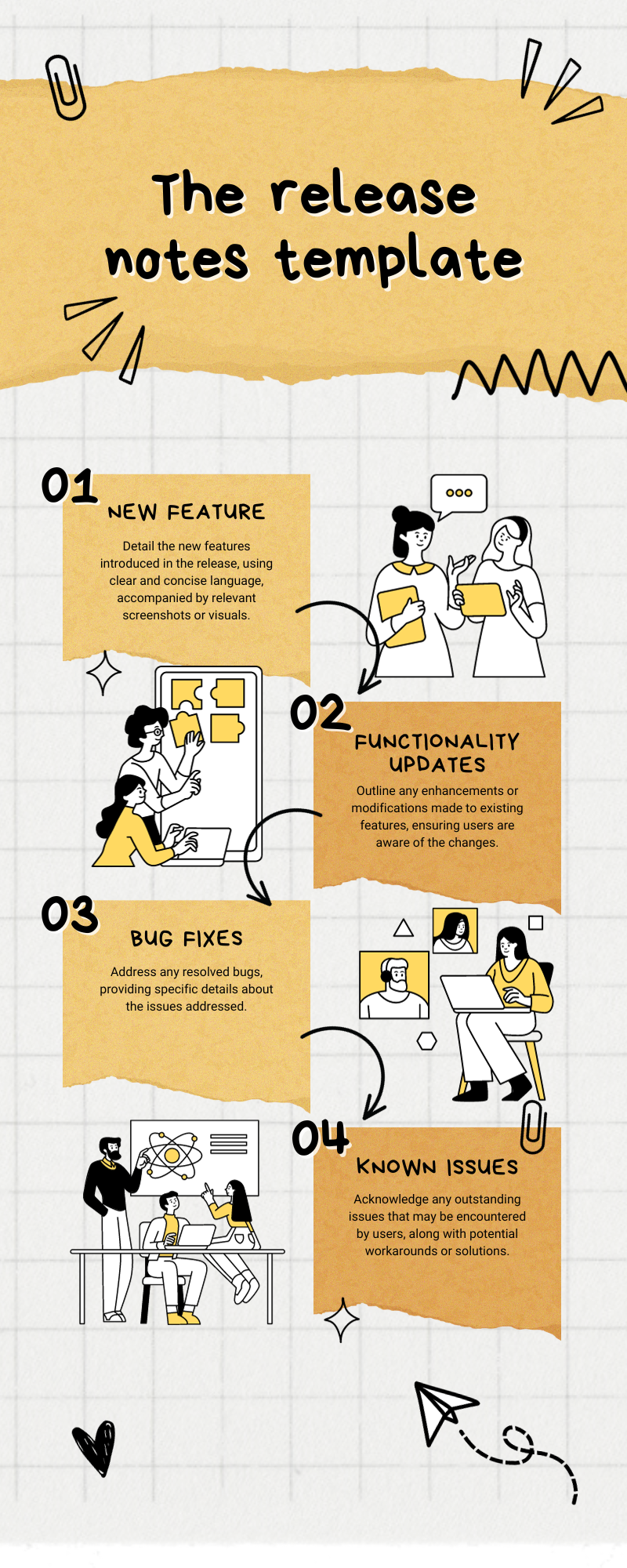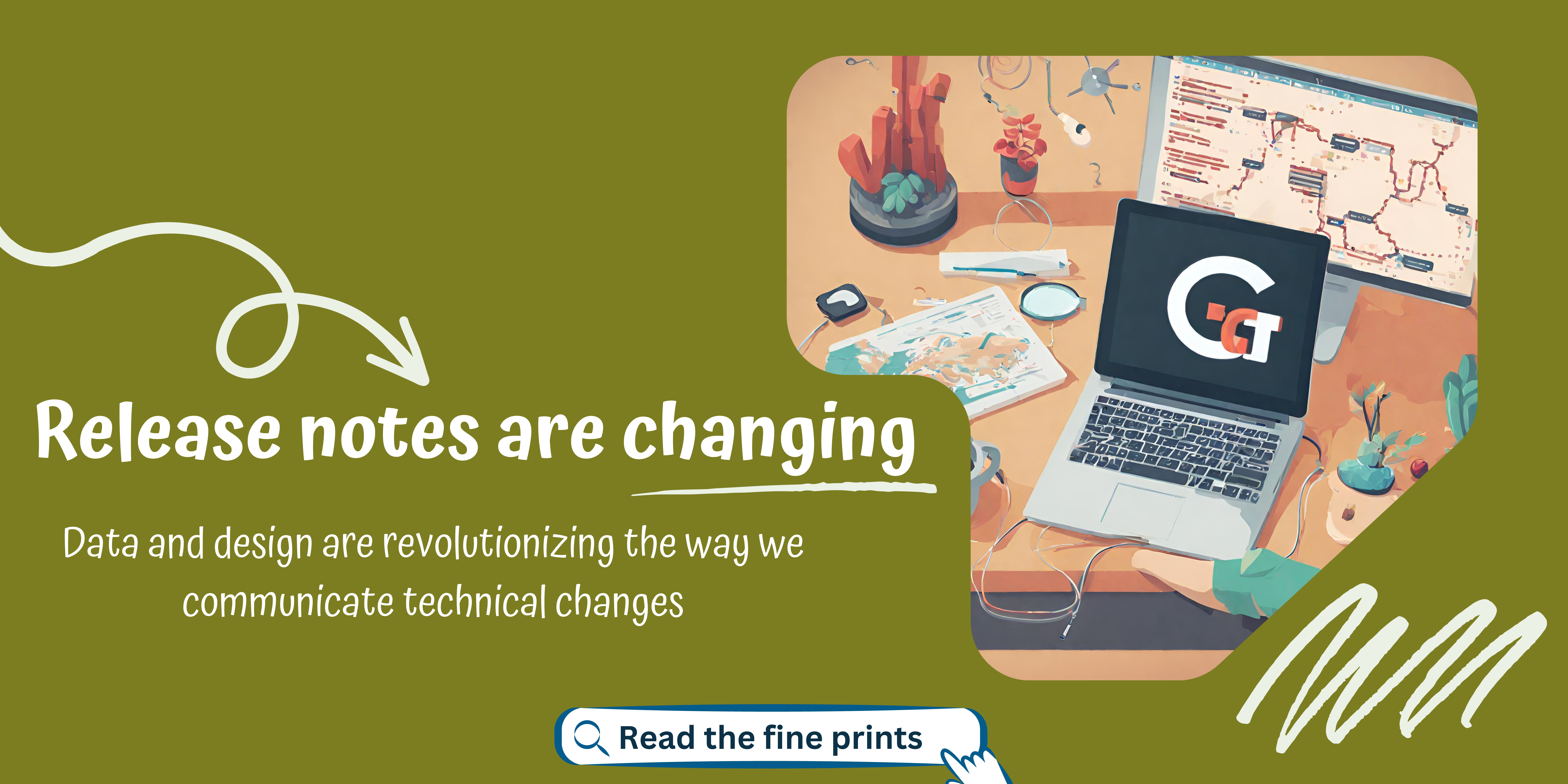“Release notes are like love letters to your users. They should be clear, concise, and informative.”
- [Unknown]
Now, I won’t make you guess who that mysterious “unknown” is. In the world of technical writing, where there are many unknowns, we should be wary of them. If we’re not, our readers might feel like they’re drowning in an ocean of information with no life raft. And let’s be honest, if your readers suffer, so does your product.
For some of you,
Who are new,
Want to know
What are release no(tes)?
(See, I’m trying hard to make it rhyme.)
Release notes are an integral part of any software development process. They communicate changes to users and help them understand how new features and functionality work. Over the years, the landscape of release notes has evolved significantly, from lengthy paragraphs to concise bullet points, and now to data and design-driven approaches.
I’ve observed a recent trend where the interest of users in reading release notes is steadily declining.
Why, you ask? Let’s delve into some Facts and Statistics:
- According to a recent survey by TechSmith, 78% of users emphasize the importance of release notes.
- However, Atlassian reports that only# 63% of users admit to reading release notes regularly.
- According to a study by UX Movement, only# 52% of users find release notes helpful in learning about new features.
-
According to a survey by G2, a mere# 45% of users claim that release notes have been instrumental in troubleshooting problems.
# My interpretation
The traditional approach
The decline in user engagement may be attributed to the traditional method of composing release notes, which involves crafting extensive paragraphs detailing each modification. While informative, this approach can prove challenging for users to assimilate. Additionally, the creation and maintenance of traditional release notes can be time-consuming.
Now, what I’m about to share is already embraced by some industry pioneers, and I’m shedding light on the same. To enhance the information conveyed in release notes, the tech writing industry has adopted a new approach - the Data and Design-Driven Approach.
Data and Design-Driven Approach
In response to the shortcomings of the traditional method, a new era emerged—one where data and design took center stage. This method employs data and analytics to understand what users want to see in release notes. Then, it utilizes design principles to craft release notes that are not only informative but also engaging and easy to understand.
Benefits of a data and design-driven approach to release notes
- Improved user satisfaction: Imagine release notes that are not just informative but also enjoyable to read! Users appreciate this kind of content, and it leaves them more satisfied.
- Increased adoption of new features: When users get how the new features roll, they’re more likely to jump on the bandwagon. It’s like introducing them to the cool kids at the tech party.
- Reduced support costs: Say goodbye to those support hotline charges! Users who can easily navigate through release notes are less likely to bug support for help.
How to Create Data and Design-Driven Release Notes
- Start with user research: Start by talking to users. What’s their jam? What do they want in those release notes? Conduct interviews and surveys to unveil the mysteries.
- Use data to prioritize changes: Use the magic of data to figure out what changes users are buzzing about. No crystal ball is needed—just a good dose of analytics.
- Design release notes for usability: Make your release notes a work of art. Use design tricks to make them easy on the eyes and brain-friendly for a quick scan.
- Test release notes with users: Before you unleash your notes on the world, run them by a group of users. Make sure it’s not just you who thinks they’re awesome.
Examples of Data and Design-Driven Release Notes
- Google cloud release notes: Google cloud release notes use a data-driven approach to identify the most important changes to include in each release. The release notes also use design principles to make the information easy to read and scan.
- Mozilla Firefox release notes: Mozilla Firefox release notes use a design-driven approach to make the information easy to understand. The release notes include videos and screenshots to help users visualize the latest changes.
- Microsoft Windows release notes: Microsoft Windows release notes use a data-driven approach to identify the most common user-reported issues. The release notes also include links to support articles and documentation to help users resolve issues they might encounter.
A Comprehensive Release Note Template
In software development, release notes often languish as technical jargon-filled documents, rarely read by users. But what if I told you that release notes can be transformed into captivating guides that not only inform but also enhance the user experience?
Enter the comprehensive release note template, your key to crafting release notes that resonate with users. This template empowers you to create release notes as engaging as a magician’s performance.

Title: Clearly convey the release’s purpose and significance in a concise yet informative manner.
Version: Indicate the specific software version to which the release notes pertain.
Release Date: Provide the exact date on which the release was deployed.
Summary: Offer a brief overview of the major changes introduced in the release, highlighting the key benefits for users.
New Features: Detail the new features introduced in the release, using clear and concise language, accompanied by relevant screenshots or visuals.
Functionality Updates: Outline any enhancements or modifications made to existing features, ensuring users are aware of the changes.
Bug Fixes: Address any resolved bugs, providing specific details about the issues addressed.
Known Issues: Acknowledge any outstanding issues that may be encountered by users, along with potential workarounds or solutions.
Additional Notes: Include any relevant information that doesn’t fall under the above categories, such as upcoming changes or compatibility considerations.
By adhering to this comprehensive template, technical writers can create release notes that are not only informative but also engaging and easy to understand.
Tips for Technical Writers
It’s all about data, design principles, visuals, and testing.
- Use data to inform your decisions: Don’t just guess what users want to see in release notes. Use data to understand their needs and priorities.
- Use design principles to create user-friendly release notes: Use clear and concise language, headings, and subheadings to organize the information.
- Use visuals to help users understand the new changes: Include screenshots, videos, and diagrams to illustrate the new features and functionality.
- Test your release notes with users: Before releasing your release notes to the public, test them with a small group of users to get their feedback and ensure that the information is clear and understandable.
As the curtain falls on this blog, let the words of the unknown echo in your ears, “Release notes are like love letters to your users. They should be clear, concise, and informative.” With the Data and Design-Driven Approach, let your love letters become epics, and may your users eagerly anticipate each new release as a thrilling chapter in the ever-unfolding story of technological progress.





Join the Discussion